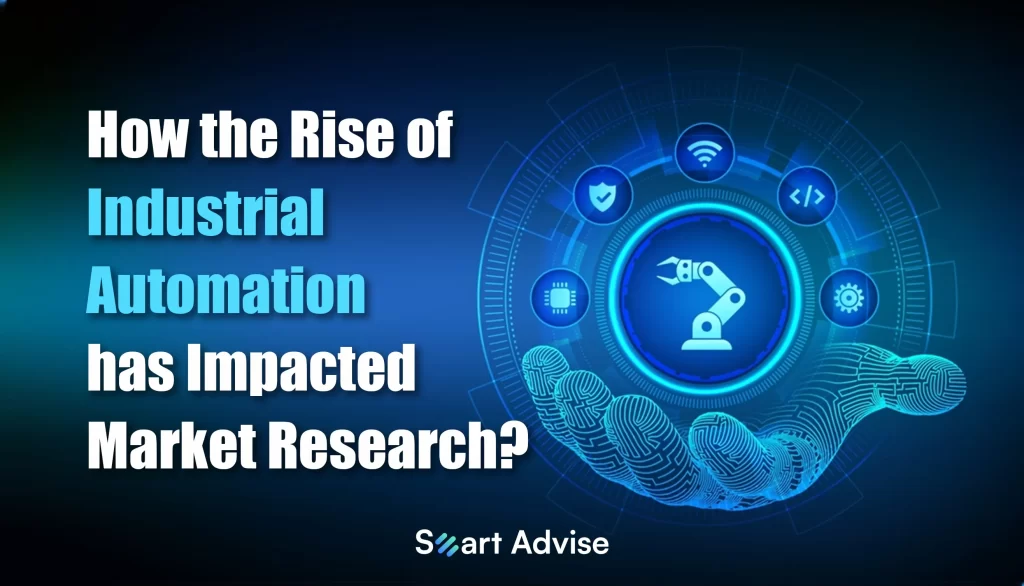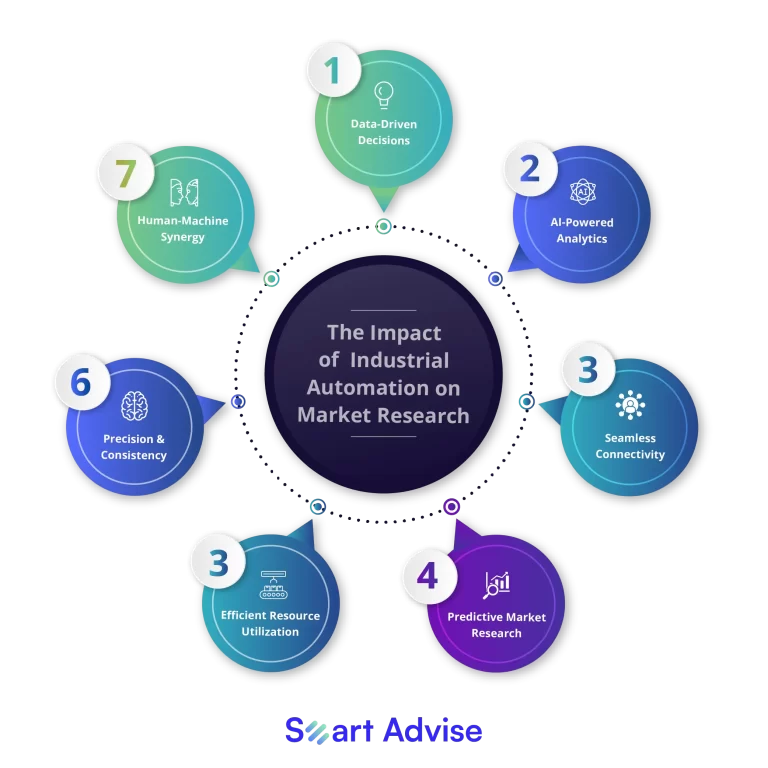
Automation has seemingly transformed the way industry operations are done, and as a result, it has a significant impact on market research as well.
This modern age is significantly defined by the technological advancements which have been reshaping industries and redefining how we conduct business. One of the most transformative innovations is industrial automation, a force that has revolutionized manufacturing processes across sectors. The rise of automation technologies has not only increased efficiency and productivity but has also opened new possibilities in market research and decision-making. In this analytical read, we will delve into the world of industrial automation, exploring the key components that make it possible and how it has impacted market research.
Programmable Logic Controllers (PLCs)
At the core of industrial automation lies the Programmable Logic Controllers (PLCs). These digital computers act as the brain of automation systems, controlling and coordinating various manufacturing processes. PLCs monitor inputs from sensors and make real-time decisions based on pre-programmed logic, leading to precise control over machines and equipment.
The introduction of PLCs has transformed industries by enabling streamlined operations, reduced downtime, and improved product consistency. With the ability to automate complex tasks, industries have witnessed increased production efficiency, cost-effectiveness, and enhanced safety standards.
Robotics
The advent of robotics has transformed industries by automating tasks that were traditionally performed by human workers. Industrial robots are now employed in manufacturing, logistics, and other sectors to handle repetitive, dangerous, and high-precision tasks. These robots work alongside human employees, enhancing productivity and ensuring a safer work environment.
Robots have not only increased production capacity but have also elevated product quality through precise and consistent execution. The integration of robotics into production lines has led to shorter cycle times, lower error rates, and ultimately, cost savings for businesses.
Human-Machine Interface (HMI)
The Human-Machine Interface (HMI) is the bridge that connects human operators with automated systems. HMIs provide a user-friendly visual representation of the manufacturing processes, allowing operators and engineers to monitor, control, and diagnose the system effectively.
The user-friendly nature of HMIs has reduced the need for specialized technical knowledge, enabling quicker training and onboarding of operators. Moreover, the real-time data displayed on HMIs enables operators to make informed decisions and respond promptly to changing conditions on the factory floor.
Statistical Insight: A report by the World Economic Forum estimates that 5 years from now, automation and a shift in the division of labor between humans and machines could result in the displacement of 85 million jobs, while 97 million new roles may emerge.
Infographic shown below expands more on main topic:

Supervisory Control and Data Acquisition (SCADA)
Supervisory Control and Data Acquisition (SCADA) systems are central to managing and controlling industrial processes. SCADA systems collect data from various sensors and devices across the factory floor. They provide a real-time overview of the entire system, helping operators and engineers monitor and control the processes efficiently.
The implementation of SCADA has improved operational efficiency and enabled remote monitoring of processes. By leveraging SCADA, businesses can identify potential bottlenecks, optimize energy usage, and make data-driven decisions to improve overall productivity.
Distributed Control Systems (DCS)
Distributed Control Systems (DCS) play a pivotal role in large-scale industrial operations. Unlike PLCs, DCS is designed for decentralized control, where various subsystems are controlled independently but work in coordination to ensure seamless operation.
The utilization of DCS has enhanced scalability and flexibility in industrial automation. It allows businesses to manage complex processes and improve coordination between different departments, ultimately leading to better resource utilization and higher overall performance.
Industrial Internet of Things (IIoT)
The Industrial Internet of Things (IIoT) represents the interconnectivity of various industrial devices and systems through the internet. IIoT enables the seamless exchange of data between machines, sensors, and software platforms, creating a network of smart devices.
The integration of IIoT has resulted in an abundance of data, which plays a significant role in market research. Businesses can now gather data on product performance, customer behavior, and supply chain operations in real-time, allowing for more informed decision-making and enhanced customer experiences.
Statistical Insight: A study by McKinsey suggests that by 2030, automation could raise global productivity growth by 0.8% to 1.4% annually.
Artificial Intelligence (AI)
In recent years, artificial intelligence (AI) has become a groundbreaking factor in the field of industrial automation. With the ability to analyze vast amounts of data and make predictions, AI enables predictive maintenance, optimized production schedules, and intelligent decision-making.
AI has revolutionized market research by providing deep insights into consumer behavior, preferences, and market trends. Businesses can leverage AI-powered analytics to identify new opportunities, optimize marketing strategies, and gain a competitive edge in the market.
Statistical Insight: According to a study by Statista, the global AI market size is projected to reach USD 126 billion by 2025, indicating the increasing relevance of AI in various industries.
Impact on Market Research
The rise of industrial automation has fundamentally changed the landscape of market research. By providing real-time data and insights, automation technologies have empowered businesses to make data-driven decisions. Market researchers now have access to a wealth of data that enables them to identify market trends, consumer preferences, and competitive intelligence more accurately.
The integration of AI and data analytics in industrial automation has also facilitated predictive market research. Businesses can now forecast demand, anticipate market trends, and adapt their strategies accordingly. Additionally, automation technologies have allowed for quicker and more cost-effective data collection and analysis, leading to more timely and accurate market research reports.
Furthermore, market researchers play a critical role in analyzing the impact of automation on various industries. They help businesses understand the changing market dynamics, identify emerging opportunities, and navigate challenges arising from the shift towards automation.
Editor’s Note
Industrial automation has ushered in a new era of efficiency, productivity, and innovation across industries. From PLCs and robotics to AI and IIoT, each component has played a pivotal role in transforming how businesses operate and make decisions. The impact of automation on market research has been profound, empowering businesses to make data-driven choices and gain a competitive edge in a rapidly evolving market.
As we see the future of industrial automation, it is evident that the synergy between technology and market research will continue to shape industries and revolutionize the way we do business. Market researchers at Smart advise, armed with cutting-edge tools and data, will remain at the forefront of driving business success in this automation-driven world. So, forge success with us, Partner with us now!